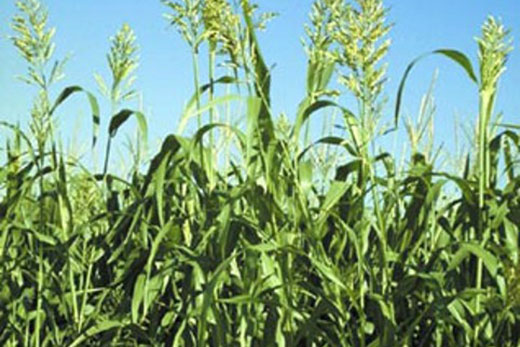With a dry summer predicted, many farmers will be wondering if they will have enough feed to see them through.
DairyNZ’s senior developer feed and farm systems, Kim Mashlan, says that even though sowing time is nearly over, there is still time to plant crops that will provide a valuable summer feed buffer in some areas.
“There are still some crops that can be planted between now and early December. Crops like sweet sudan grass, sorghum-sudan grass hybrids and green-feed maize maintain relatively high levels of production during hot and dry conditions and can reduce the risk of having inadequate forage during the summer,” says Kim.
Sudan grass and sorghum-sudan grass hybrids are primarily used for grazing and cutting because of their high regrowth potential. They regrow faster than forage sorghum and recover quickly after grazing or cutting. Warm soil temperatures, 17°C and rising, are required for germination.
Sorghums are known for being drought tolerant. They absorb water more efficiently because they have twice as many secondary roots per unit of primary root as maize and have half as much leaf area and a waxier leaf surface; traits that help withstand drought and provide a source of feed during summer pasture shortages.
Sudan grass and sorghum-sudan grass can be grazed 35-45 days after planting when the crop reaches a minimum height of 0.8m (0.8-1.2m recommended) and will normally be ready for a second cutting or grazing within 28-35 days ( at 0.8 m).
Sudan grass and sorghum-sudan grass hybrids that are 0.8-1.0m in height have on average, a dry matter content of 15 percent, an average energy content of 9.0-10.0 MJME/kgDM and yield 3.5-4.5tDM/ha per cut (2-3 cuts/grazings depending on moisture levels) Intake should be restricted to 30-40 percent of diet.
The quality and feed value drop drastically once the grass begins to mature (greater than 1.4m in height). To maximize quality, feed when the crop is between 0.8-1.0m in height.
Greenfeed maize can yield large quantities of green fodder per hectare relative to most other alternative summer fodder crops and summer pasture.
It has an energy content of around 10-10.5 MJME/kgDM and crude protein of 8-12 percent. It can be cut and carried to the herd or break fed. The summer greenfeed option is not suitable for silage.
Intake should be restricted to 25-50 percent of diet. It can be planted once soil temperature is 10°C and rising and greenfed from 42-56 days of planting. Yields of 10-18T DM/ha are possible but will be less in dry years.
Nitrate poisoning is a potential issue with any crop that grows rapidly, has been drought stressed, or has been frosted. Crops should be sampled and analysed before grazing/cutting if nitrate build-up is suspected.
Prussic acid poisoning is a concern if feeding sudan grass and sorghum-sudan grass hybrids to dairy cows. As the danger is highest in early growth stages and after frosting, farmers should not graze or green cut until the crop is greater than 0.8m high and spray out paddocks before autumn frosts or regrassing. Also as sudan grass is low in sulphur, farmers should check pasture sulphur levels – if low (less than 0.25 percent) sulphur supplementation is recommended.
Farmers should contact their local veterinarian if they have concerns about nitrate or prussic acid poisoning.



0 Comments
Leave a Comment